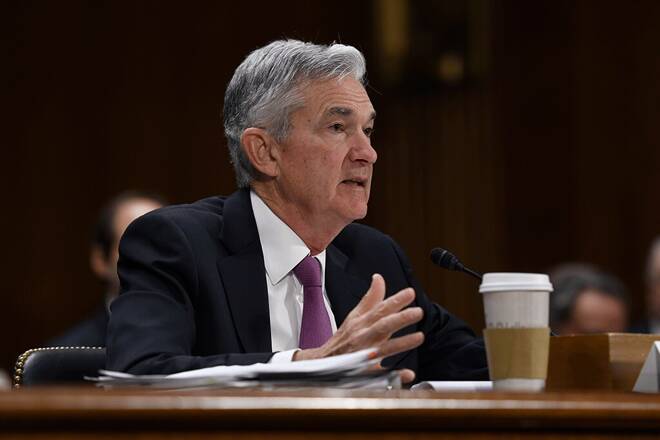Advertisement
Advertisement
Two-Weeks Before Fed Meeting, Policymakers Remain Divided Over Rate Cut
By:
One group like Fed Chair Jerome Powell believes the outlook is generally positive. Another believes the U.S. economy needs even easier policy to avoid sinking into a recession. Still a third group believes the Fed has gone far enough or even a little too far in trying to revitalize the economy.
It’s not too early to start thinking about the U.S. Federal Reserve’s next move on interest rates. With two weeks to go until their next monetary policy meeting on October 29-30, U.S. central bank policymakers appear unconvinced phase one of a partial U.S.-China trade deal is enough to dismiss the policy uncertainty that has weighed on U.S. economic growth for months.
At the same time, Federal Reserve decision-makers remain far from united behind additional rate cuts beyond the two cuts they made in July and September with unemployment at a 50-year low and consumer spending strong.
On Tuesday, it was San Francisco Fed President Mary Daly and St. Louis Federal Reserve President James Bullard’s turn to voice their opinions about the direction of interest rates.
Off-Setting Views
On Tuesday, Daly told reporters after a speech at the Lost Angeles World Affairs Council & Town Hall, “Right now, I see the economy in a good place, and policy accommodation in a good place.”
However, businesses retain an overarching sense of uncertainty, Daly said, even though “the gusting (of headwinds) seems to have gone down a little bit on the news of some progress on Brexit, some progress on trade negotiations between the U.S. and China.”
Current weak inflation levels, and a three-year inflation outlook among U.S. consumers falling to its lowest level on record, has caught her eye.
On Tuesday, a report showed the inflation outlook among U.S. consumers remained muted in September, rising slightly over the near-term but falling to the lowest level on record over a three-year time frame since the New York Federal Reserve began its monthly survey of consumer expectations in 2013.
Although Daly expressed some concerns over low inflation, she still expects it to rise back to the Fed’s 2% target, and believes the Fed’s two rate cuts so far this year, in July and September, will help sustain the longest U.S. expansion in history.
“In terms of what to do going forward, I would like to see additional data, because the economy is in a really good place right now,” Daly said.
Speaking in London, Bullard painted a gloomier picture. Like Daly, he sees what he called continued “trade regime uncertainty” as a key risk to the U.S. economy. However, he also put more emphasis on continued weak inflation and slowing global growth.
Unlike Daly, who sees Fed policy as currently “slightly accommodative”, Bullard said on Tuesday in his view policy may be “too restrictive”.
As a result, the Fed “may choose to provide additional accommodation going forward, but decisions will be made on a meeting-by-meeting basis,” Bullard said.
Fed Still Divided
Two weeks before the Fed’s interest rate decision, and policymakers still haven’t budged from their September meeting positions.
One group like Fed Chair Jerome Powell believes the outlook is generally positive. Another believes the U.S. economy needs even easier policy to avoid sinking into a recession. Still a third group believes the Fed has gone far enough or even a little too far in trying to revitalize the economy. Their biggest fear is a too-easy policy could lead to financial instability if investors take on too much risk and asset values get stretched.
As of Tuesday’s close, investors expect Fed policymakers to reduce rates when they meet October 29-30. According to the CME FedWatch Tool, the latest probability of a 25-basis point Federal Open Market Committee (FOMC) rate cut is 75.4%.
The focus ahead of the next Fed meeting will be on U.S. economic data. This week, the key report is Retail Sales. Next week, it’s Durable Goods. On October 29, the Conference Board releases its Consumer Confidence report. On October 30 while the Fed is meeting, a report on Advance GDP will be released.
Unfortunately, Fed members won’t have the chance at this meeting to react to data on Personal Spending and the Core PCE Price Index.
Additionally, ISM Manufacturing, which last month posted its second consecutive contraction, will be released on November 1 along with the October Non-Farm Payrolls report.
This could be a problem for Fed members because some may favor another rate cut in anticipation of a weak ISM Manufacturing report, and some may pass on a rate cut due to expectations of a solid jobs report.
About the Author
James Hyerczykauthor
James is a Florida-based technical analyst, market researcher, educator and trader with 35+ years of experience. He is an expert in the area of patterns, price and time analysis as it applies to futures, Forex, and stocks.
Latest news and analysis
Advertisement
